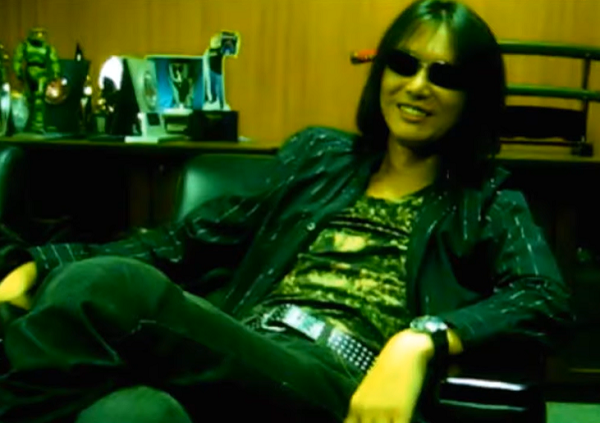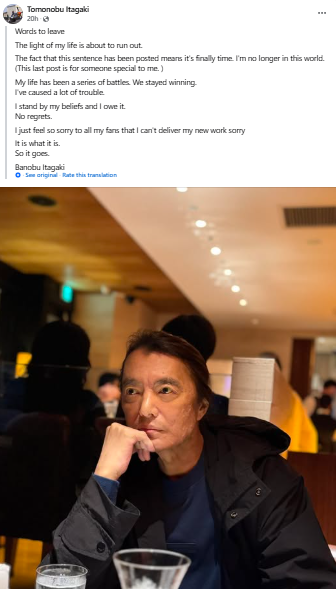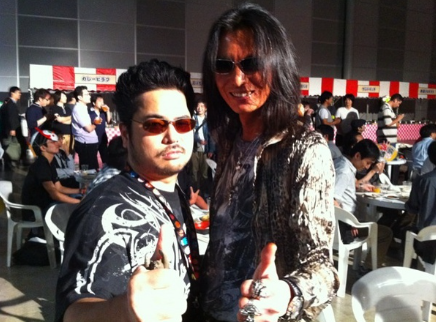Father Of Dead Or Alive, Devil's Third Producer Tomonobu Itagaki Passes Away
A career of controversy, creativity, and boldness
Mike Lind
10/17/20253 min read


The video game world lost one of its more unconventional video game directors, designers, and producers. On October 16th Tomonobu Itagaki passed away. The cause of death is not known as of this writing. Through a pre-written message on his Facebook, Itagaki's family shared news of his passing.


Words to leave
The light of my life is about to run out.
The fact that this sentence has been posted means it's finally time. I'm no longer in this world.
(This last post is for someone special to me. )
My life has been a series of battles. We stayed winning.
I've caused a lot of trouble.
I stand by my beliefs and I owe it.
No regrets.
I just feel so sorry to all my fans that I can't deliver my new work sorry
It is what it is.
So it goes.
Banobu Itagaki
Tomobu Itagaki got his start in video games joining Tecmo in 1992, and one of his first works on the Super Famicom was Tecmo Super Bowl. His big break cam in 1996 with the surprise smash hit Dead or Alive. Naturally, the game was noted for its roster of gorgeous female characters, it also came at the growing popularity of 3D fighting games, as Soul Edge, Tekken, and Virtua Fighter were dominating the arcade scene. Its famous "physics" aided in drawing attention from gamers, but DOA's mechanics blended a great deal of strategy and fast-paced arcade action that blurred its technical aspects with high octane close quarters combat. It held a spiritual connection to Sega's Virtua Fighter series, as Dead or Alive was built on Sega's Model 2 arcade hardware. Itagaki was also renown for reviving Tecmo's Ninja Gaiden franchise in 2004, which had been dormant throughout the 90's.
Itagaki's Ninja Gaiden series would be widely acclaimed for its ultra-violent gameplay and its strict difficulty, challenging expert gamers to the zenith of their skills. Dedicated to his craft for game design, he challenged himself with a more definitive version, Ninja Gaiden Black, to push the power of the Xbox and to bridge the gap between the Xbox and the Xbox 360. Meanwhile, the Dead or Alive series was increasing in popularity, with its sequels and spin-off, Dead or Alive: Xtreme Beach Volleyball, which included an anthology of minigames that pushes building companionships with the female characters.
Despite the success, he would leave Tecmo after the release of Ninja Gaiden II in 2008, suing the company for 1.4 million dollars for being withheld bonuses for his previous accomplishments. Also citing emotional damage, distress, and worsening his personal relationships with his colleagues. He would form Valhalla Studios in 2010 with former Tecmo employees and work would begin on Devil's Third, marketed as a new style of hyper-violent video game. Marketed as an Xbox 360 exclusive, it went through development hell, seeing its build shift from various game engines to the demise of THQ at the time, its original publisher. It would end up releasing for the Wii U in 2015, seeing very limited release in the United States. It would be the final game Itagaki would release.
While his works have a flair for the eye-catching and provocative, Itagaki was a very thorough game designer who care deeply for integral, yet approachable game design. His commitment was often offset by his aggressive and abrasive personality, seemingly sharing a common trait in his friend Katsuhiro Harada, the series director of the Tekken franchise, as they drew from some Western influences; being very outspoken and responsive to fan feedback. In Itagaki's case, for better and worse. He stood as an outlier of sorts, but this brash attitude would alienate him from mainstream game development, as he never seemed to regain a foothold following the release of Devil's Third.
He died at the age of 58.


